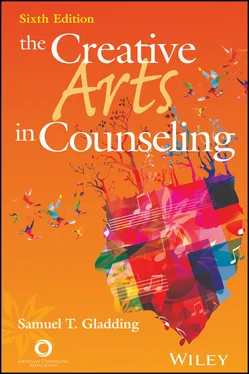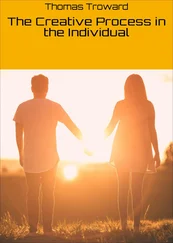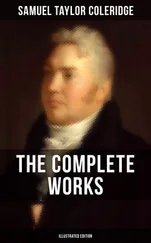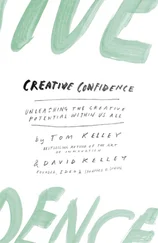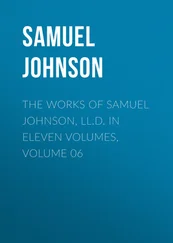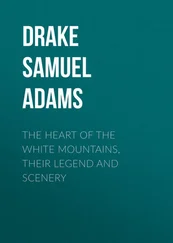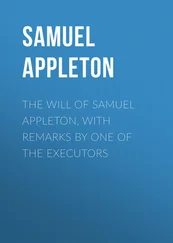Samuel T. Gladding - The Creative Arts in Counseling
Здесь есть возможность читать онлайн «Samuel T. Gladding - The Creative Arts in Counseling» — ознакомительный отрывок электронной книги совершенно бесплатно, а после прочтения отрывка купить полную версию. В некоторых случаях можно слушать аудио, скачать через торрент в формате fb2 и присутствует краткое содержание. Жанр: unrecognised, на английском языке. Описание произведения, (предисловие) а так же отзывы посетителей доступны на портале библиотеки ЛибКат.
- Название:The Creative Arts in Counseling
- Автор:
- Жанр:
- Год:неизвестен
- ISBN:нет данных
- Рейтинг книги:3 / 5. Голосов: 1
-
Избранное:Добавить в избранное
- Отзывы:
-
Ваша оценка:
- 60
- 1
- 2
- 3
- 4
- 5
The Creative Arts in Counseling: краткое содержание, описание и аннотация
Предлагаем к чтению аннотацию, описание, краткое содержание или предисловие (зависит от того, что написал сам автор книги «The Creative Arts in Counseling»). Если вы не нашли необходимую информацию о книге — напишите в комментариях, мы постараемся отыскать её.
*To purchase print copies, please visit the ACA website here
*Reproduction requests for material from books published by ACA should be directed to permissions@counseling.org
The Creative Arts in Counseling — читать онлайн ознакомительный отрывок
Ниже представлен текст книги, разбитый по страницам. Система сохранения места последней прочитанной страницы, позволяет с удобством читать онлайн бесплатно книгу «The Creative Arts in Counseling», без необходимости каждый раз заново искать на чём Вы остановились. Поставьте закладку, и сможете в любой момент перейти на страницу, на которой закончили чтение.
Интервал:
Закладка:
The first reason for helping professionals to use the arts in therapeutic settings is that they are a primary means of assisting individuals to become integrated and connected. Often people who become mentally disturbed, such as those with an eating disorder, have a distorted view of themselves (Robbins & Pehrsson, 2009). They become estranged from reality, become alienated from others, and thwart healing forces within themselves from coming into action. This type of estrangement is a phenomenon that Carl Rogers (1957) described as incongruence. It prevents growth and development. Many of the arts, such as dance, music, and poetry, have the potential to help individuals become integrated and more aware of themselves. For instance, Robbins and Pehrsson (2009) found that poetry therapy and narrative therapy gave women with anorexia nervosa a voice (a catharsis) that helped them reclaim their individual power.
A second reason for using the arts in counseling involves energy and process. Most creative arts are participatory and require the generation of behaviors and emotions. Activity involving the expressive arts gives individuals new energy and is reinforcing because it leads somewhere. In many cases, the input and output energy cycle involved in the arts is similar to that among marathon runners. Initially, runners use energy to cover mileage at a set pace. Later, after considerable physical pain, they experience what is known as a runner’s high , a feeling of renewal and energy that allows them to pick up the pace. After such an event, they can analyze what happened and how what they have learned can influence their future as a runner. This type of reflecting and talking, especially with arts activities, can lead to new and usually improved functioning for the people involved.
A third reason for incorporating the arts into counseling involves focus. There is an old African American saying that for people to achieve, they must keep their “eyes on the prize.” The arts, especially those that involve vision, allow clients to see more clearly what they are striving for and what progress they are making toward reaching their goals (Allan, 2008; Lazarus, 1977). Other nonvisual arts, such as those dealing with sound, also encourage this type of concentration.
Yet a fourth rationale for using the arts in counseling involves creativity. To be artistic as a counselor or to use the arts in counseling “enlarges the universe by adding or uncovering new dimensions” (Arieti, 1976, p. 5) while enriching and expanding people who participate in such a process. Thus, counseling as an art, and the use of the arts in counseling, expands the world outwardly and inwardly for participants. Better yet, the artistic side of counseling allows and even promotes this expansion in an enjoyable and relaxed manner.
A fifth reason for including artistic components in counseling is to help clients establish a new sense of self. Establishing this new sense of self is especially important in resiliency work in which clients are attempting to recover from adversity (Metzl & Morrell, 2008). At such times, there is a need to engage in creative processes such as art or drama for persons who have been traumatized to gain a fresh perspective on life and themselves. Awareness of self is a quality associated with age. It usually increases in older adults (Erikson, 1968; Jung, 1933). This ability to come more into contact with the various dimensions of life can be promoted and highlighted through the use of the arts in counseling. The visual, auditory, or other sensory stimuli used in sessions give clients a way to experience themselves, whatever their circumstances, differently in an atmosphere in which spontaneity and risk-taking are encouraged within limits. Clients are able to exhibit and practice novel and adaptive behaviors. Thus, clients gain confidence and ability through sessions, and the arts assist them to become continuously (Allport, 1955). A sixth reason for including the arts in helping, such as counseling, involves concreteness. In using the arts, a client is able to conceptualize and duplicate beneficial activities. For example, if writing poetry is found to be therapeutic, clients are instructed to use this method and medium when needed (Mazza, 2017). By doing so, they lay out a historical trail so that they can see, feel, and realize more fully what they have accomplished through hard work and inspiration. Such a process allows their memories to live again and may lead to other achievements.
Creative Reflection
Think of a time when you were positively influenced by participating in one of the arts. It may have been playing an instrument, acting out a part in a play, painting a picture, dancing, taking a picture, going for a jog or walk, or arranging flowers. What did you notice about your participation that made you feel or act differently? How unique or universal do you think your experience is compared to others who may have accidentally or purposefully engaged in an arts activity and found themselves better in the end because of it?
Insight is another potential outcome from, and the seventh reason for, the use of the arts and artistic methods in counseling. Two types of insight are most likely to result. The first is primarily that of the participants in counseling, that is, the counselor and client. In this type of insight, one or both of these individuals comes to see a situation in a different light than when counseling began. For example, clients may see their situation as hopeless but not serious or as serious but not hopeless (Watzlawick, 1983). This type of focus makes a difference, for it is what people perceive that largely determines their degree of mental health or alienation (Ellis, 1988). In the second type of insight, mental health professionals in associations—for example, the American Counseling Association—gain new awareness into how they need to develop collectively. For example, they may recognize “that art often leads to science” and that balance is needed between scientific and artistic endeavors if the profession is to avoid becoming mechanical (Seligman, 1985, p. 3).
An eighth reason for using the arts in counseling centers involves socialization and cooperation. D. W. Johnson and Johnson (2017) compiled an extensive amount of information showing that cooperative tasks result in building rapport and establishing greater self-esteem and prosocial behavior. The arts are a useful means of promoting these two developments and provide a common ground for linking people to one another in a positive manner (Menninger Foundation, 1986).
A final reason why the arts are useful and appropriate in counseling is that they are multicultural (D. A. Henderson & Gladding, 1998; Lewis, 1997). With regard to cultures, counseling, and the arts, different cultures and clients within these cultures have preferred ways of expressing creativity and artistic ability (Molina et al., 2003). Counselors are challenged to help clients discover what works best for them, when, and even why. Counselors provide a resource of materials and examples for clients to use in sessions. They can prompt the types of positive experiences that go with these resources while simultaneously becoming attuned to culturally preferred ways of dealing with problematic situations.
In different cultural settings, the arts may do any of the following:
Draw people out of self-consciousness and into self-awareness by having them express themselves in a symbolic manner
Call attention to the process of expression as well as the universal and unique nature of strategies used in such a procedure
Provide a set of concrete experiences clients can carry with them to help them relate to others and themselves
Help clients develop new ideas and interests to use in relating to themselves and others outside of counseling
Читать дальшеИнтервал:
Закладка:
Похожие книги на «The Creative Arts in Counseling»
Представляем Вашему вниманию похожие книги на «The Creative Arts in Counseling» списком для выбора. Мы отобрали схожую по названию и смыслу литературу в надежде предоставить читателям больше вариантов отыскать новые, интересные, ещё непрочитанные произведения.
Обсуждение, отзывы о книге «The Creative Arts in Counseling» и просто собственные мнения читателей. Оставьте ваши комментарии, напишите, что Вы думаете о произведении, его смысле или главных героях. Укажите что конкретно понравилось, а что нет, и почему Вы так считаете.
